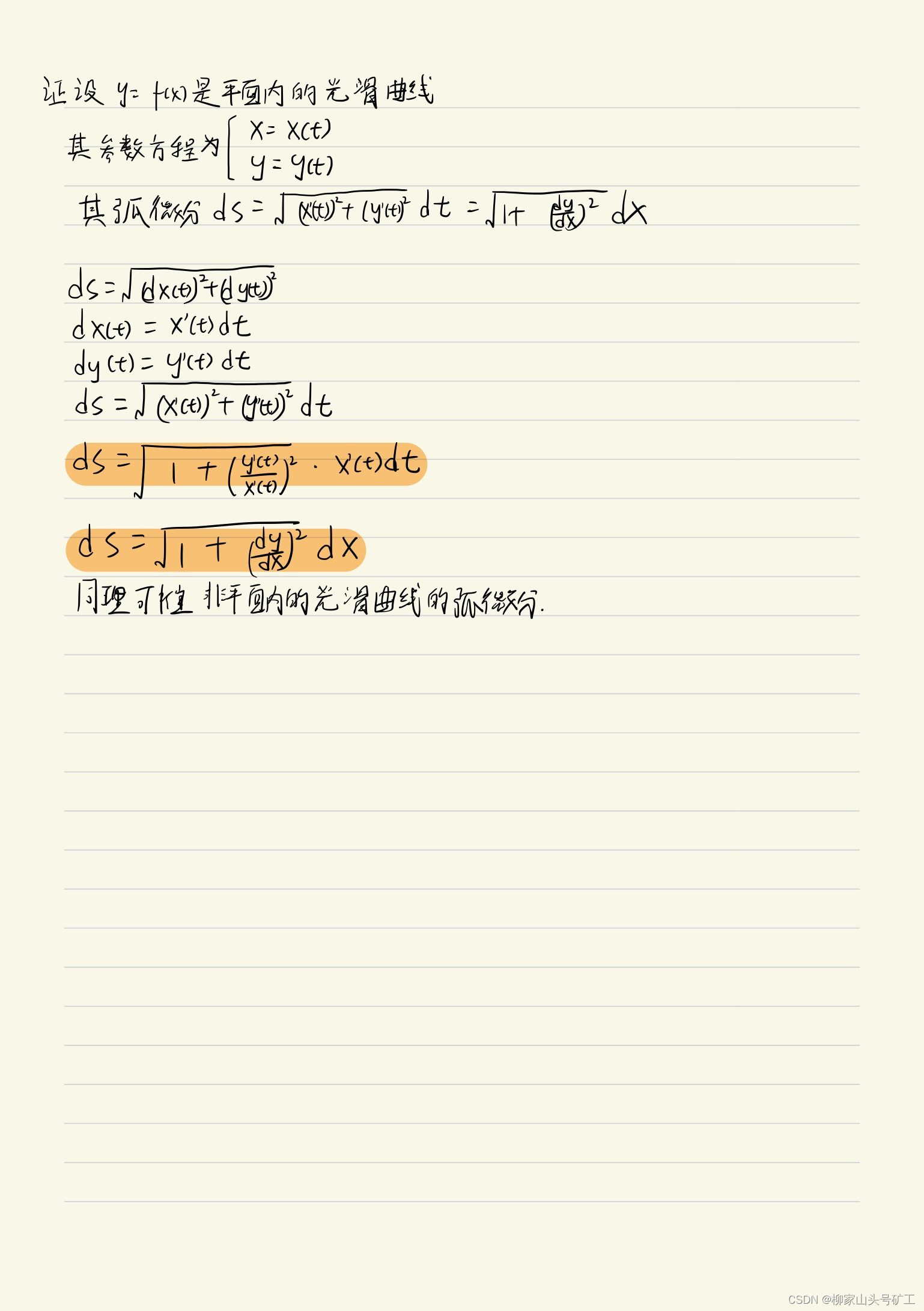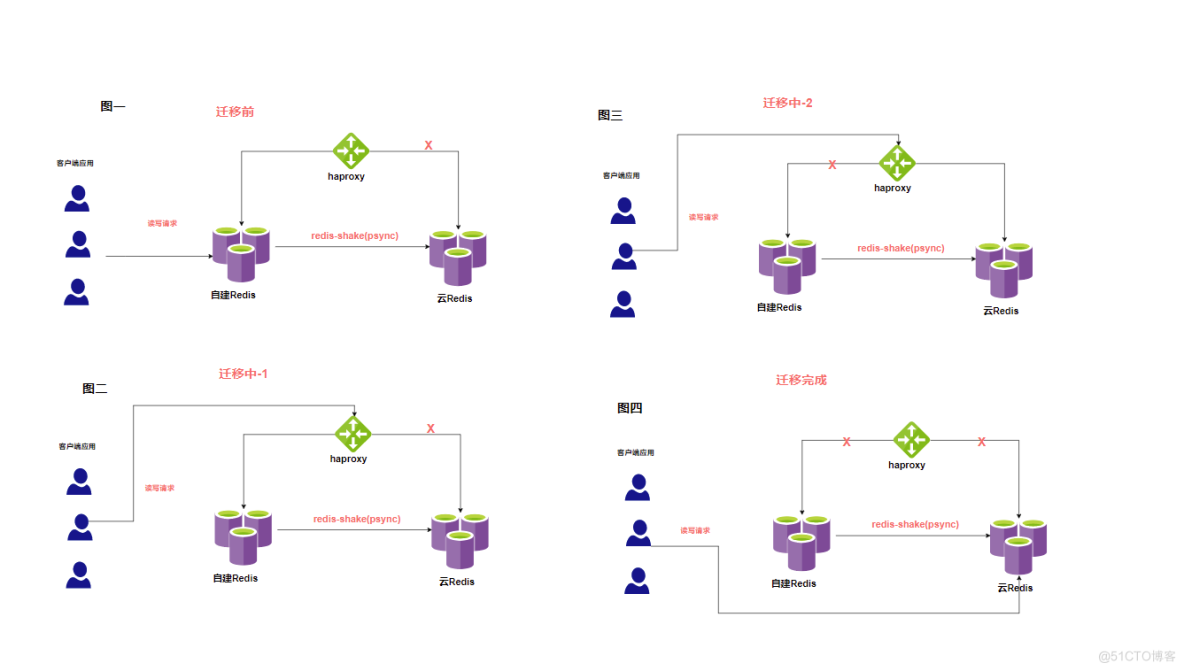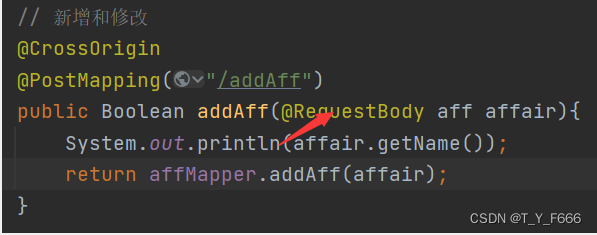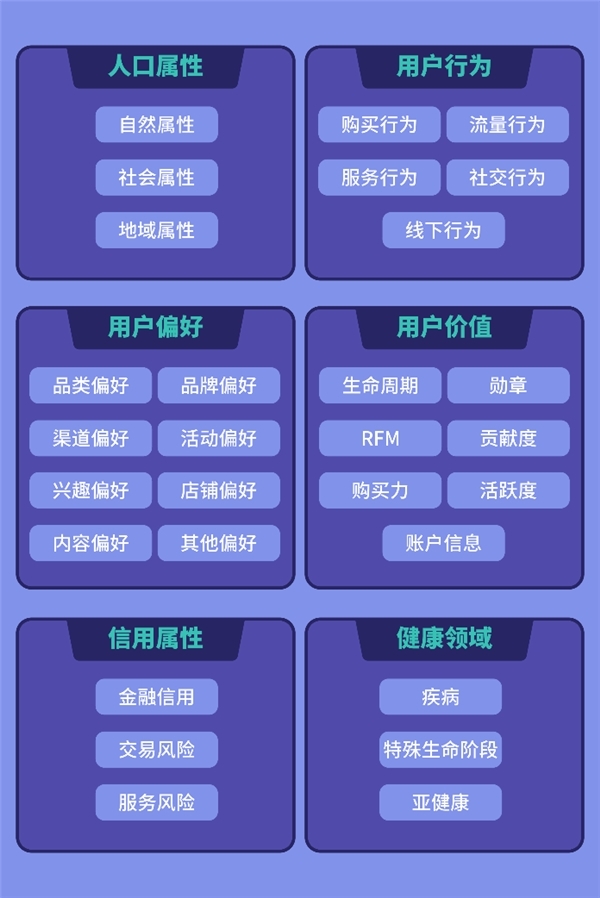当前位置:网站首页>[JS Advanced] Creating sub-objects and replacing this_10 in ES5 standard specification
[JS Advanced] Creating sub-objects and replacing this_10 in ES5 standard specification
2022-08-10 13:38:00 【Delicate Roasted Sweet Potatoes】
目录
3. How to create child objects
【前文回顾】 ES5The object of protection of the standard specification_09

️ 创建子对象—Object.create()
1. 存在问题
旧js中,To create a subobject of a type,只能"new 构造函数()".但是,如果没有构造函数,只有一个父对象,also want to create child objects,怎么办?
2. 解决方案
Henceforth as long as there is no constructor,只有父对象,Also want to create a child object to inherit the parent object,都可以用Object.create()
3. How to create child objects
var 子对象=Object.create(父对象,{
//强调: 必须用defineProperties()Same syntax for adding own properties
自有属性:{
value:属性值,
writable:true,
enumerable:true,
configurable:false
},
... : {
... : ...
}
});
4. create()原理
原理: 3件事:
(1). 创建一个新的空对象
(2). Set new object inheritancecreate()中的父对象(That is, let the new object inherit the parent object) (3). Add own properties to new objects
补:var 子对象=Object.create(父对象);
This is to create an empty child object of the parent object.
原理:做了2件事
(1).创建一个新的空对象
(2).Set new object inheritancecreate()中的父对象(That is, let the new object inherit the parent object)
5. 示例: 使用Object.create()创建子对象
7_Object_create.html
<!DOCTYPE html>
<html lang="en">
<head>
<meta charset="UTF-8">
<meta name="viewport" content="width=device-width, initial-scale=1.0">
<title>Document</title>
</head>
<body>
<script>
var father={
money:1000000000000,
car:"infiniti"
}
var hmm=Object.create(father,{
phone:{
value:"iphone 12",
writable:true,
enumerable:true,
configurable:false
}
});
console.log(hmm);
console.log(hmm.money);
console.log(hmm.car);
</script>
</body>
</html>运行结果:
{ phone: "iphone 12" }
phone: "iphone 12"
__proto__:
car: "infiniti"
money: 1000000000000
__proto__: Object
1000000000000
infiniti
️ 替换this
1. 存在问题
sometimes in the functionthisThe point is not what we want!其实我们也可以修改thispoint to any object we want.
2. 如何修改this指向
3种:
(1). Temporarily call a function once,临时替换一次函数中的this为指定的对象
调用
a. 要调用的函数.call(替换this的对象, 实参值1, 实参值2,...)
b. 原理: call做了三件事:
1). 调用一次函数,立刻执行
2). 将函数中的this临时替换成call()The first argument value object of
3). 将callAll remaining argument values after the first argument value object of,parameter variables that are passed to the function one-to-one!
c. 示例: 使用call让lilei和hmm都可以使用jisuan()function to calculate own salary
8_call.html
<!DOCTYPE html>
<html lang="en">
<head>
<meta charset="UTF-8">
<meta name="viewport" content="width=device-width, initial-scale=1.0">
<title>Document</title>
</head>
<body>
<script>
//have a common function,Can calculate the total salary of an employee
// 计算 底薪 奖金1 奖金2
function jisuan(base, bonus1, bonus2){
console.log(`${this.ename}的总工资是${base+bonus1+bonus2}`)
}
//有两个员工:
var lilei={ ename:"Li Lei" };
var hmm={ ename:"Han Meimei" };
//Both employees want to usejisuan()函数,Calculate your own gross salary
//错误做法:
// jisuan(10000,1000,2000);//和lilei无关
//错误做法:
//lilei.jisuan(10000,1000,2000);//报错: lilei.jisuan不是一个函数,因为jisuan()即不属于lilei,又没在lilei的原型链上!
//正确:
jisuan.call(lilei,10000,1000,2000);
// | ↓ ↓ ↓
//调用jisuan( ↓ base,bonus1,bonus2)
// this
console.log(lilei);
//hmm也想用jisuan(),Calculate their salary
jisuan.call(hmm,3000, 4000, 5000);
// | ↓ ↓ ↓
//调用jisuan( ↓ base,bonus1,bonus2)
// this
</script>
</body>
</html>运行结果:
Li Lei的总工资是13000
{ename: "Li Lei"}
ename: "Li Lei"
__proto__: Object
constructor: ƒ Object()
... ...
Han Meimei的总工资是12000
(2). 特殊情况: If the function requires multiple argument values are given in an array,那么,应该用apply代替call,The rest of the usage is exactly the same:
a. 要调用的函数.apply(替换this的对象, 数组名)
b. 原理: applyalso did three things:
1). 调用一次函数,立刻执行
2). 将函数中的this临时替换成apply()The first argument value object of
3). 先将applyarray of second argument values of打散into multiple element values,Then pass it one-to-one to the formal parameter variables of the function!
c. 示例:使用applyTo break up the array,再传参
9_apply.html
<!DOCTYPE html>
<html lang="en">
<head>
<meta charset="UTF-8">
<meta name="viewport" content="width=device-width, initial-scale=1.0">
<title>Document</title>
</head>
<body>
<script>
//have a common function,Can calculate the total salary of an employee
// 计算 底薪 奖金1 奖金2
function jisuan(base, bonus1, bonus2){
console.log(`${this.ename}的总工资是${base+bonus1+bonus2}`)
}
//有两个员工:
var lilei={ ename:"Li Lei" };
var hmm={ ename:"Han Meimei" };
//Both employees want to usejisuan()函数,Calculate your own gross salary
jisuan.call(lilei,10000,1000,2000);
// | ↓ ↓ ↓
//调用jisuan( ↓ base,bonus1,bonus2)
// this
//hmm也想用jisuan(),Calculate their salary
//但是,假设hmmThe salary is given in an array
var arr=[3000, 4000, 5000];
// 应用
jisuan.apply(hmm, arr );
// | Automatically break up the array first
// | 3000 4000 5000
// | ↓再传参↓ ↓
//调用jisuan( ↓ base, bonus1,bonus2)
// this
</script>
</body>
</html>运行结果:
Li Lei的总工资是13000
Han Meimei的总工资是12000
(3). 创建新function copy,and permanently replace in the function copythis为指定对象
a. 问题: If you want to call the function repeatedly,repeated replacementthis,每次都要call()非常麻烦!
b. 解决: 今后,Just call the function repeatedly,repeated replacementthis,都要用bindto bind permanentlythis!
c. 如何: 2步:
1). 先用bind基于原函数创建A the same function副本,并永久替换函数中的this为指定的对象
var function copy=原函数.bind(替换this的对象)
2). Repeatedly calling function copy,而不用每次都call()and replace with the incoming objectthis.
function copy(实参值)
d. 问题: If the individual argument values are also almost constant,Can it be fixed permanently,No need to re-enter?
e. 解决: bindnot only can bindthis,You can also bind part of the actual parameter value in advance!2步:
1).function copy=原函数.bind(替换this的对象, fixed argument value)
2). function copy(Just pass the remaining variable actual parameter values.!)
f. 示例: 使用bind为lilei创建一个jisuan函数的副本,永久绑定this为lilei和形参base为10000
10_bind.html
<!DOCTYPE html>
<html lang="en">
<head>
<meta charset="UTF-8">
<meta name="viewport" content="width=device-width, initial-scale=1.0">
<title>Document</title>
</head>
<body>
<script>
//have a common function,Can calculate the total salary of an employee
// 计算 底薪 奖金1 奖金2
function jisuan(base, bonus1, bonus2){
console.log(`${this.ename}的总工资是${base+bonus1+bonus2}`)
}
//有两个员工:
var lilei={ ename:"Li Lei" };
var hmm={ ename:"Han Meimei" };
//如果lileiCalculate your salary every month
//lileicreated its ownjisuan()function copy
var jisuan2=jisuan.bind(lilei,10000 );
// | ↓永久
//jisuan2:function jisuan( ↓ base ){
//永久this
//}
jisuan2(1000,2000);
jisuan2(500,1000);
jisuan2(1500,2500);
//如果hmmI also want to have my own function for calculating salary
var jisuan3=jisuan.bind(hmm,3000);
jisuan3(4000,5000);
</script>
</body>
</html>运行结果:
Li Lei的总工资是13000
Li Lei的总工资是11500
Li Lei的总工资是14000
Han Meimei的总工资是12000
3. 替换this知识小结
a. 只在一次调用函数时,临时替换一次this,使用call
b. 既要替换一次this,又要拆散数组再传参,使用apply
c. 创建新function copy,并永久绑定this,使用bind

扩展:this判断—8种指向
this 8种指向: 判断this,一定不要看定义在哪儿!只看调用时!
1. obj.fun() this->obj
2. fun() 或 (function(){ ... })() 或 多数回调函数 或 定时器函数 this->window
3. new Fun() this->new正在创建的新对象
4. 类型名.prototype.共有方法=function(){ ... } this->将来谁调用指谁,同第一种情况
5. DOM或jq中事件处理函数中的this->当前正在触发事件的DOM元素对象
如果需要使用简化版函数,必须$(this)
6. 箭头函数中的this->箭头函数外部作用域中的this
7. jQuery.fn.自定义函数=function(){ ... } this->将来调用这个自定义函数的.前的jQuery子对象,不用再$(this)
8. new Vue()中methods中的函数中的this->当前new Vue()对象
总结:知识点提炼
1. 只要验证字符串格式或查找、屏蔽敏感词时都要用正则
(1). 最简单的正则: 一个敏感词的原文
(2). 某一位字符上可能有多种备选字时用: [备选字列表]
(3). 如果[]中部分字符是连续的,可用: [x-x]
a. 一位小写字母: [a-z]
b. 一位大写字母: [A-Z]
c. 一位字母(大小写都行): [A-Za-z]
d. 一位字母或数字都行: [0-9A-Za-z]
e. 一位汉字: [\u4e00-\u9fa5]
(4). 预定义字符集:
a. \d 一位数字
b. \w 一位数字、字母或_
c. \s 空格、tab、换行等空字符
d. . 任意字符
(5). 如果规定一个字符集或子规则反复出现的次数时就用量词:
a. 有明确数量边界的量词:
1). {n} =n 必须n个,不能多也不能少
2). {n,m} n个<= <=m个
3). {n,} n个<= 多了不限
b. 没有明确数量边界的量词:
1). * 0个<= 可有可无,多了不限
2). ? 0个或1个 可有可无,最多一个
3). + 1个<= 至少一个,多个不限
(6). 两个规则中选其一匹配即可: 规则1|规则2
(7).希望将多个子规则分为一组先联合匹配,再和分组外的其他规则联合匹配:
(多个子规则)
(8). 匹配特殊位置: 3个
a. 字符串的开头位置: ^
b. 字符串的结尾位置: $
c. 英文句子中的单词的左右边界: \b
2. String家提供的正则相关函数: 3件事
(1). 查找敏感词: 4种情况
a. 查找一个固定的敏感词出现的位置:
var i=str.indexOf("敏感词")
// 如果找不到,返回-1
b. 用正则查找多种敏感词出现的位置:
var i=str.search(/正则/i)
// 如果找不到,返回-1
c. 查找敏感词的内容:
1). 查找第一个敏感词的内容和位置:
var arr=str.match(/正则/i)
// arr: [ 0:"敏感词内容", index:敏感词位置 ]
// 如果找不到返回null
2). 查找所有敏感词的内容,不关心位置:
var arr=str.match(/正则/ig)
// arr: [ 敏感词1, 敏感词2, ... ]
// 如果找不到返回null
d. 查找每个敏感词的内容和位置: reg.exec
补: js中所有数组底层本质都是关联数组(下标都为字符串) 1. 访问数组中元素值的标注写法: arr["下标"] 2. 简写: a. 如果下标为自定义字符串名称,可简写为: arr.自定义名称的下标 b. 如果下标为数字内容的字符串,可简写为: arr[数字下标] |
总结: 查找方法的返回值规律 1. 如果原函数返回的是下标位置i,如果找不到,都返回-1 2. 如果原函数返回的是一个数组arr或一个对象obj,如果找不到,都返回null 3. 如果原函数返回类数组对象,如果找不到返回空类数组对象: { length:0 } |
(2). 替换敏感词: 2种
a. 简单替换:
变量=str.replace(/正则/ig, "新值")
b. 高级替换:
变量=str.replace(/正则/ig, function(形参){
return 根据本次敏感词动态生成一个新值
})
c. 删除敏感词:
变量=str.replace(/正则/ig, "")
(3). 切割字符串:
a. 简单切割:
var arr=str.split("切割符")
b. 复杂切割:
var arr=str.split(/正则/i)
c. 打散字符串为字符数组:
var arr=str.split("")
3. RegExp对象:
(1). 创建正则表达式对象:
a. 如果正则是固定的:
var reg=/正则/ig
b. 如果正则需要动态生成:
var reg=new RegExp("正则",ig)
(2). 验证字符串格式:
var bool=reg.test(str)
reg必须同时前加^后加$
(3). 既查找每个关键词的内容又查找每个关键词的位置: (待续)
do{
var arr=reg.exec(str);
if(arr!=null){
获得本次找到的敏感词的内容(arr[0])和位置(arr.index)
}
}while(arr!=null);
4. 函数:
(1). 创建函数三种方式:
a. function 函数名(形参列表){ 函数体; return 返回值 } //会被声明提前,不好
b. var 函数名=function(形参列表){ 函数体; return 返回值 }//不会被声明提前,首选
c. var 函数名=new Function("形参1", "形参2", ... , "函数体; return 返回值")
函数本质: 1). 函数也是一个对象,对象中保存着函数的函数体代码 2). 函数名只是一个普通的变量,函数名通过函数对象地址,引用着函数对象 3). function在底层等效于new Function() function 函数名(){ ... }和var 函数名=function(){}在底层都会被翻译为 var 函数名=new Function(...) 只不过function 函数名(){}是先提前,再翻译 而var 函数名=function(){}是不提前,原地翻译 |
(2). 重载: 今后,一件事,根据传入不同的参数值,动态执行不同的逻辑时,都用重载
function 一个函数名(不写形参变量){
//arguments对象自动接住所有实参值
if(arguments.length==0){
执行一种逻辑
}else if(arguments.length==1){
执行另一种逻辑
}else{
执行其它逻辑
}
}
其中arguments是类数组对象: 和数组相比:
a. 相同点: 也有下标,length属性,也可for循环遍历
b. 不同点: 不是数组类型,无法使用数组家的函数
(3). 匿名函数:
a. 所有回调函数优先使用匿名函数——用完释放,节约内存
b. 所有js代码都应该保存在匿名函数自调中,禁止使用全局变量,避免全局污染!
(function(){
要执行的js代码
})();
结果: 匿名函数内的都是局部变量,不会产生全局变量.
局部变量随匿名函数一起释放.不会污染全局.
(4). 作用域和作用域链: (跟着视频亲自画图!!!)
a. 作用域:
1). 全局作用域:window,保存全局变量
优: 可重用,缺: 随处可用, 极易被污染
2). 函数作用域: 保存局部变量
局部变量包括2中: 函数中var出的变量和形参变量
优: 仅函数内可用,不会被污染,缺: 不可重用
3). 函数作用域对象原理:
i. 每个函数定义时都自带好友列表,好友列表里2个格子,一个是空,一个引用window
ii. 调用函数时临时创建函数作用域对象保存函数局部变量.并将函数作用域对象的地址保存到函数好友列表中离自己近的格子里.
iii. 函数执行过程中按就近原则先在自己的函数作用域对象中找局部变量使用.如果找不到,才被迫去全局window中找变量使用.
iv. 函数调用后,好友列表中离自己近的格子清空,导致函数作用域对象以及内部的局部变量被释放!——所以局部变量不可重用!
b. 作用域链: 保存一个函数所有可用的作用域对象的链式结构(好友列表)学名就叫作用域链.
1). 作用域链保存着一个函数可用的所有变量
2). 作用域链控制着变量的使用顺序.先局部后全局.
5. 闭包:
a. 只要希望给一个函数保护一个可反复使用的专属变量,又防止这个变量被外界篡改时,都用闭包.
b. 闭包三步:
1). 用外层函数妈妈包裹要保护的变量和内层函数
2). 外层函数妈妈用return把内层函数孩子返回到外部
3). 外部想使用内层函数的人,必须调用外层函数,才能获得return出来的内层函数对象.并将内层函数保存在一个变量中反复使用.
c. 闭包形成的原因: 外层函数调用后,外层函数的作用域对象被内层函数引用着无法释放,形成了闭包对象
d. 闭包的缺点: 闭包比一般的函数占用多一块内存——外层函数的函数作用域对象.所以,用完闭包后,应该尽快释放:
保存内层函数的变量=null
6. 面向对象: 封装 继承 多态
(1). 封装: 3种:
a. 用{}创建一个对象:
var 对象名={
属性名:属性值,
... : ... ,
方法名: function(){
... this.属性名 ...
}
}
b. 用new Object():
1). 2步:
i. var 对象名=new Object()
ii. 对象名.属性名=属性值;
对象名.方法名=function(){ ... }
2). 对象底层也是关联数组:
i. 都是名值对儿的集合
ii. 都可用[""]和.方式访问成员.
如果属性名来自于变量,就只能用[],不要加""
iii. 访问不存在的属性,都不报错,返回undefined
判断是否包含某个属性:
对象.属性名!==undefined
iv. 强行给不存在的属性赋值,都不报错,而是自动添加该属性
给对象添加新属性,唯一办法,强行赋值:
对象名.新属性名=新值
v. 都可用for in遍历
c. 只要反复创建多个相同结构的对象都用构造函数:
1). 2步:
i. 定义构造函数:
function 类型名(形参1,形参2, ...){
this.属性名1=形参1;
this.属性名2=形参2;
//构造函数中不要再包含方法定义定义!
}
ii. 用new 调用构造函数:
var 对象名=new 类型名(属性值1, 属性值2,...)
2). new做了4件事:
i. 创建一个新的空对象
ii. 让新对象继承(_ _proto_ _)构造函数的原型对象
iii. 调用构造函数,传入实参,并自动替换构造函数中的this为new正在创建的新对象.构造函数中,通过强行赋值的方式为新对象添加规定的属性,并保存属性值.
iv. 返回新对象的地址,保存到=左边的变量中.
3). 优点: 重用对象结构代码
4). 缺点: 如果构造函数中包含方法定义,则每次创建新对象都会重复创建相同方法的副本. ——浪费内存!
(2). 继承:
a. 今后,只要同一类型所有子对象共用的方法和属性值,都要集中保存在构造函数的原型对象中!
构造函数.prototype.属性名/共有方法名=属性值/function(){ ... }
b. 自有属性和共有属性:
1). 获取属性值:都可用"子对象.属性名"
2). 修改属性值:
i. 自有属性: 子对象.自有属性名=新值
ii. 共有属性: 构造函数.prototype.共有属性名=新值
c. 内置类型原型对象:
1). 11种内置类型/对象: String, Number, Boolean, Array, Date, RegExp, Math(对象), Error, Function, Object, global(对象)
2). 一种类型=构造函数+原型对象
i. 构造函数: 创建子对象
ii. 原型对象: 为所有子对象保存共有成员
3). 查看该类型共有哪些API: 类型名.prototype
4). 该类型缺少想用的方法: 类型名.prototype.共有新方法=function(){ ... }
d. 原型链: 保存着一个对象可用的所有属性和方法.控制着属性和方法的使用顺序:先自有再共有——就近原则!
(3). 多态
重点讲重写:如果子对象觉得从父对象继承来的成员不好用,可以在子对象自己内部重写和父对象同名的成员,覆盖父对象的成员,优先使用自己的.
******面向对象终极总结: 封装,继承,多态******
①封装: 创建对象,2种:
如果只创建一个对象: {}
如果反复创建多个相同结构的对象: 构造函数
②继承: 所有子对象共用的属性值和方法,都要放在构造函数的原型对象中
③多态: 重写: 只要觉得从父对象继承来的成员不要用,都在子对象中重写同名成员
④如果觉得这个父对象对象都不好用,可以自定义继承: 2种:
1). 只换一个子对象的父对象: 2种:
i. 子对象.__proto__=新父对象
ii. Object.setPrototypeOf(子对象, 新父对象)
2). 更换多个子对象的原型对象: 构造函数.prototype=新对象
********************************************************************
7. 严格模式: "use strict";
(1). 禁止给未声明过的变量赋值
(2). 静默失败升级为错误
(3). 普通函数调用中的this不指window,而是指undefined
(4). 禁用arguments.callee
总结: this 判断this时,Don't look at where he is defined.Have to see where it is and how to call 4种:
1. obj.fun() this->点前的obj对象2. fun() this->默认指window
3. new Fun() this->new正在创建的新对象
4. 类型名.prototype.共有方法=function(){ ... }
this->who will call this function in the future,就指谁
future calls to this function.前的某个子对象
8. 保护对象:
(1). 保护属性:
a. Each property contains three switches:
1). writable: Controls whether property values can be modified
2). enumerable: control whether thefor in遍历到,but only againstfor in不防.
3). configurable: 控制
i. Is it possible to delete the current property
ii. 是否可修改writable和enumerable两个开关
强调: configurable一旦改为 false,不可逆!
b. Multiple switches that modify only one property:
Object.defineProperty(对象名, "属性名",{开关: true/false})
c. Multiple switches that modify multiple properties:
Object.defineProperties(对象名,{
属性名:{ 开关:true/false, ... },
... : ...
})
d. When protecting properties with custom rules,Accessor properties only: 2步:
Object.defineProperties(对象,{
//1). To define an anonymous and half hidden data attributes:
_属性名:{
value: 属性的初始值,
writable:true,
enumerable:false,
configurable:false
},
//2). Redefine the accessor property bodyguard to impersonate the property to be protected
属性名:{
get:function(){
return this._属性名
},
set:function(value){ //value ← To modify the new property values
先验证value
如果验证通过,this._属性名=value
else if the validation fails,Instead of saving the new property value,还会报错
},
enumerable:true,
configurable:false
}
})
Accessor properties are used by the outside world just like normal properties:
对象.属性名
When the outside world tries to get the accessor property value,自动调用get()
When the outside world tries to modify the value of the accessor property,自动调用set()
(2). 保护结构: 3个级别
a. 防扩展: Object.preventExtensions(对象)
b. 密封: Object.seal(对象)
c. 冻结: Object.freeze(对象)
9. 如果没有构造函数,also want to create child objects,继承父对象:
var 新子对象=Object.create(父对象,{
自有属性:{
value:属性值,
开关:true或false,
... :...
},
... : { ... }
})
10. 替换this: 3种:
(1). 在一次调用函数时,临时替换this,首选:
函数.call(对象, 实参值,...)
(2). 临时替换一次this,但是需要打散数组When passing the parameters again,forced to change to:
函数.apply(对象, 数组)
(3). Create a new function that is exactly the same and永久绑定thisand partial argument values:
var new function name=原函数.bind(对象, 固定实参值, ...)

如果这篇【文章】有帮助到你,希望可以给【青春木鱼】点个赞,创作不易,相比官方的陈述,我更喜欢用【通俗易懂】的文笔去讲解每一个知识点,如果有对【前端技术】感兴趣的小可爱,也欢迎关注️️️【青春木鱼】️️️,我将会给你带来巨大的【收获与惊喜】!
边栏推荐
- ABAP file operations involved in the Chinese character set of problems and solutions for trying to read
- 汉字检测和关键词检测
- 需要被记录的OpenStack相关的命令_自己用
- R语言实战应用案例:论文篇(一)-特殊柱形图绘制
- 2022年五大云虚拟化趋势
- Short read or OOM loading DB. Unrecoverable error, aborting now
- Calculate the number of combinations recursively
- ES5和SE6来实现一个Promise效果
- Pointer (preliminary solution of C language)
- 3DS MAX 批量导出文件脚本 MAXScript 带界面
猜你喜欢

3DS MAX batch export file script MAXScript with interface

Ethernet channel 以太信道

Detailed explanation of es6-promise object

高数_证明_弧微分公式

Cloud Migration Practice of Redis

AWS 安全基础知识

【量化交易行情不够快?】一文搞定通过Win10 wsl2 +Ubuntu+redis+pickle实现股票行情极速读写

发送post请求前台无法获取数据

借数据智能,亚马逊云科技助力企业打造品牌内生增长力

Stream通过findFirst()查找满足条件的一条数据
随机推荐
数据产品经理那点事儿 二
CodeForces - 811A
Drive IT Modernization with Low Code
递归递推之Fighting_小银考呀考不过四级
C# WPF image is displayed without problems, but the solution does not display the image at runtime
MySQL interview questions
Interface Automation Testing Basics
矩阵键盘&基于51(UcosII)计算器小项目
代码随想录笔记_动态规划_70爬楼梯
[Advanced Digital IC Verification] Difference and focus analysis between SoC system verification and IP module verification
递归递推之计算组合数
Codeforces Round #276 (Div. 1) B. Maximum Value
Redis 定长队列的探索和实践
需要被记录的OpenStack相关的命令_自己用
实现一个深克隆
WebView的优化与常见问题解决方案
Comparison version number of middle questions in LeetCode
【学习笔记】Redis的持久化
YTU 2295: KMP模式匹配 一(串)
M²BEV: Multi-Camera Joint 3D Detection and Segmentation with Unified Bird’s-Eye View Representation